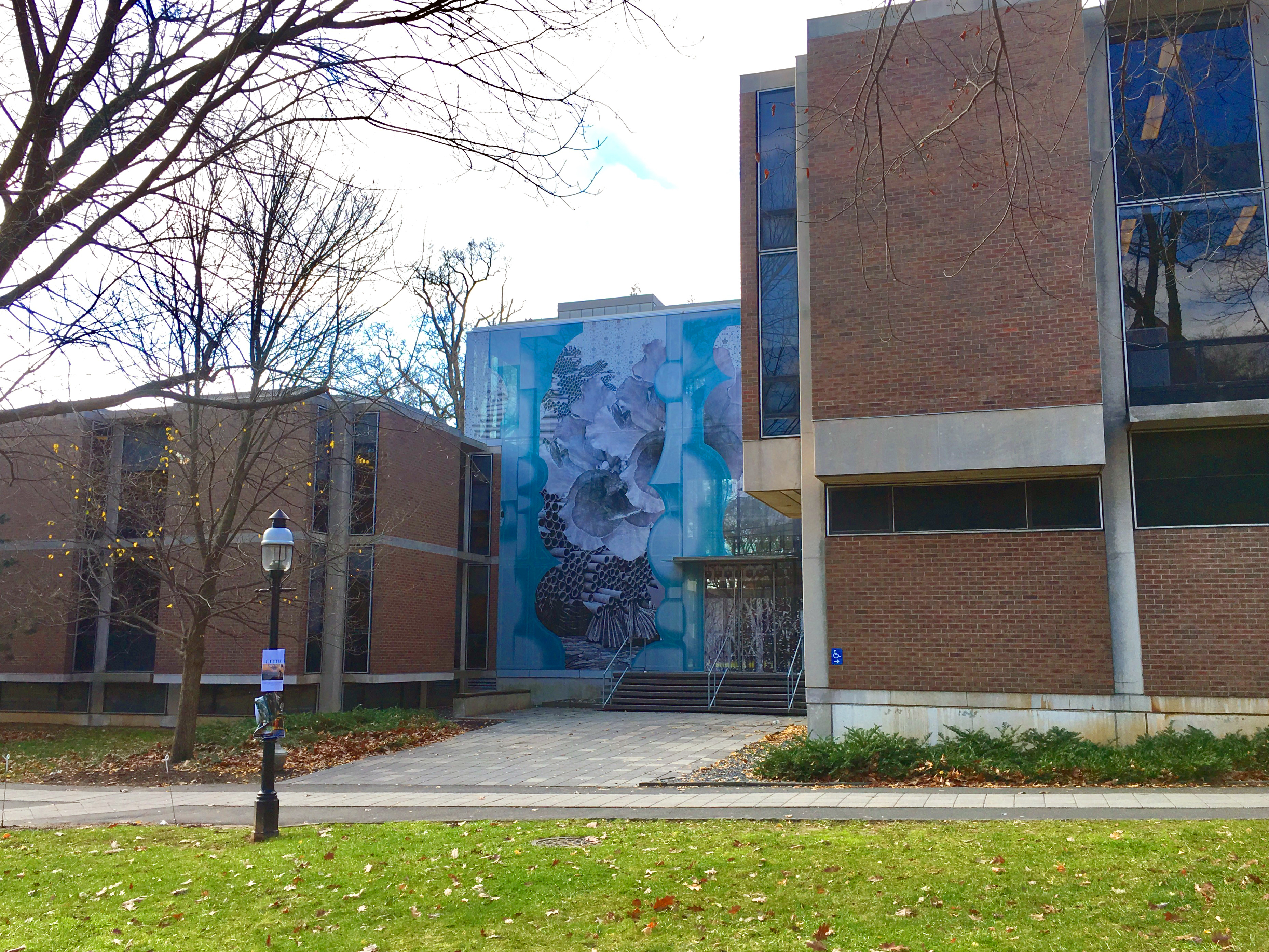Pita + Bloom Install “Signatures” at Princeton University
On Thursday, December 1, SCI-Arc faculty and founding partners of their eponymous design research practice Florencia Pita and Jackilin Hah Bloom presented a lecture on their new installation at Princeton University. Commissioned by the Princeton School of Architecture Dean Monica Ponce de Leon, the treatment to the building’s ARO-designed, glass-skinned façade is part of an effort to activate unexpected spaces with thought-provoking design gestures.
Conceptually rooted in the interplay between two- and three-dimensional design, architectural designers Pita and Bloom approached the installation as a 3D design challenge that incorporates theories of popular culture, architecture, and notoriety. Working with the literal lines of a signature—specifically that of Princeton campus architects Fisher, Nes, Campbell, and Partners—the design team abstracted the form of the original signature lines to an architectural scale that began to represent columns, says Bloom. “In addition, we had to align our rotated geometries with the existing façade conditions and used that opportunity to apply the 2D design as an architectural gesture to outline new framing outside the IGU mullions,” she explains.


Color is a prominent feature of Pita + Bloom work, and Signatures is no exception. Drawing from materiality of the surrounding campus, color was introduced as reference to the aging glass on the adjacent red brick which gains a white film over time. The light blue shade of the columns in the new installation addresses the variances that occur on glass, from aged window graining to the smoothly fritted façade panels.
Behind the blue hued columns, a high-contrast collage suggests potential interior conditions with stylized representations of concrete pipes, an Olivetti typewriter, and a Max Ernst etching. Set behind the architectural elements of the design, the graphic elements provide strong, modernist messaging against the flat glass façade and encourage inquiry. “Princeton is a campus where, if you’re an architect or an architecture student, you stop in many places as you find your way through lots of relevant architecture,” explains Pita. “We’re not trying to compete with that legacy but instead are aiming to build a dialogue.”
Signatures is applied to the School of Architecture building on a 50 percent opaque vinyl, similar to what is applied to buses or airplanes. Because of the color distribution and material treatment’s variance in transparency, viewers of the building’s exterior see very little activity inside the building. However, from the interior, the only design features that remain are the outlines of the architectural gestures, creating a flickering viewing effect.
“This mass-produced material has an interesting effect on the building,” Pita continues. “From the exterior, Signatures delivers a very strong impression but, from the interior, visitors can miss it entirely. It’s an interesting duality between living and working in the space, and one’s perception from simply walking by the building.”